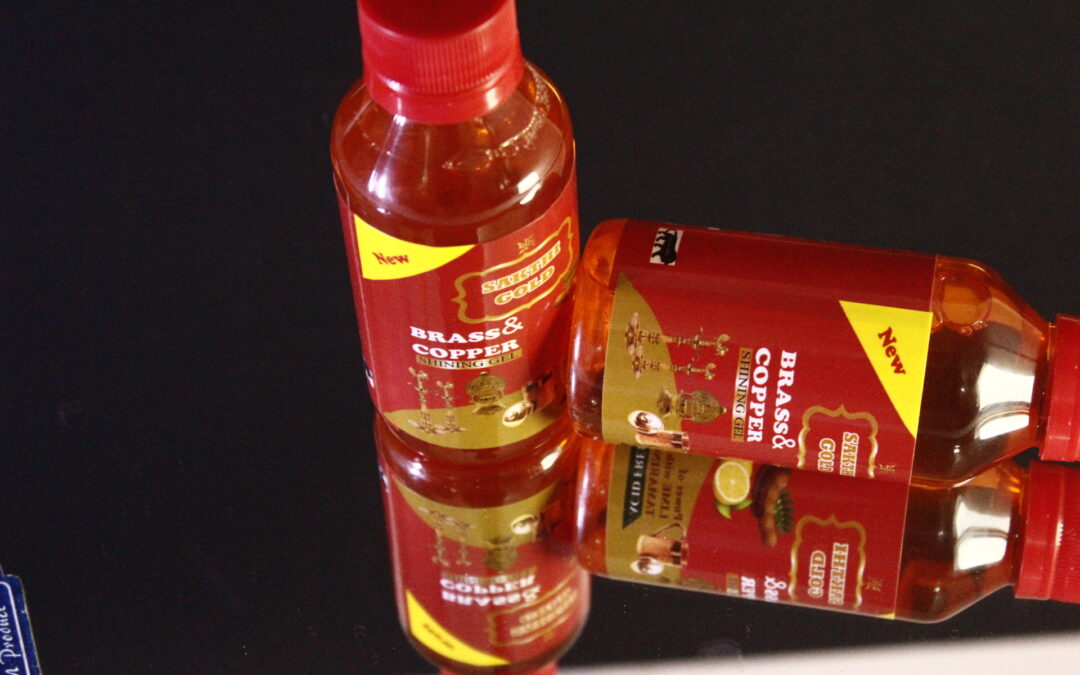why it is changing color
The color change in silver, brass, and copper occurs due to a combination of factors including oxidation, chemical reactions, and tarnishing:
- Oxidation:
When these metals react with oxygen in the air, they can form a thin layer of oxide on their surface. This oxide layer often has a different color than the pure metal. For example, silver can develop a blackish tarnish, brass can develop a brownish hue, and copper can turn greenish (verdigris) or reddish-brown (copper oxide).
- Chemical Reactions:
Exposure to chemicals in the environment can also cause color changes. For instance, exposure to sulfur compounds can lead to black tarnish on silver (silver sulfide), while exposure to acids can affect the patina on copper, causing it to turn green (copper carbonate).
- Tarnishing:
All three metals are prone to tarnishing, which is a natural process caused by exposure to elements like oxygen, moisture, and pollutants. Tarnish alters the surface color and appearance of the metal.
- Alloys and Composition:
Brass, for example, is an alloy of copper and zinc. Different compositions of alloys can also affect the color and how they react to environmental factors compared to pure metals.
Copper:
- Natural Oxidation:
When exposed to air and moisture, copper undergoes a process called oxidation. This results in the formation of a thin layer of copper oxide on its surface.
- Initial Color Change:
Initially, fresh copper has a reddish-brown color. As it oxidizes, the surface turns darker, progressing from a reddish-brown to brown-black hue.
- Patina Formation:
Over time, especially in outdoor environments, copper develops a greenish layer called patina. This patina is primarily composed of copper salts like copper sulfate and copper carbonate. It forms due to reactions with atmospheric oxygen, moisture, and pollutants.
- Stages of Patina:
The patina formation on copper typically progresses from an initial dull brown or greenish hue to a more stable green color. This green color is often valued for its aesthetic appeal and protective properties, as it slows down further corrosion of the metal.
Brass:
- Composition and Properties:
Brass is an alloy of copper and zinc, and its color can vary depending on the proportion of these metals.
- Initial Color:
Freshly polished brass has a bright, yellow-gold color due to its high copper content.
- Tarnishing:
Similar to copper, brass also undergoes oxidation when exposed to air. The surface develops a darker coloration over time. This can range from a darker yellow to brown or even greenish hues, depending on environmental conditions.
- Patina Development:
Brass can also develop a patina over time, which contributes to its antique or aged appearance. This patina is a result of oxidation and corrosion reactions, leading to the formation of compounds like copper oxides and carbonates.
Silver:
- Initial State:
Pure silver has a bright metallic white color when freshly polished. It is highly reflective due to its high reflectivity of light.
- Tarnish Formation:
Silver tarnishes when exposed to sulfur-containing compounds in the air. This forms silver sulfide on the surface, which appears as a dull gray or black coating.
- Patina and Tarnish:
The tarnish layer that forms on silver can vary in appearance from a light gray to deep black, depending on the extent of exposure to sulfur compounds. This tarnish layer can be removed through polishing, revealing the shiny silver surface underneath.
- Aging Effects:
Silverware and jewelry often develop a patina over time through wear and handling. This patina can enhance the appearance of intricate designs and patterns by providing contrast between polished and oxidized areas.
Contents
reference
Refer to the product
SAKTHI GOLD SHINING POWDER GEL AND PAST
Sakthi gold shining powder
You’re likely referring to a product used to clean and shine brass and copper surfaces. The content of such a powder typically includes:
1. sakthi gold shining powder to remove tarnish and grime.
2. sakthi gold shining powder to dissolve oxidation and stains.
3. sakthi gold shining powder to create a shiny finish.
4. sakthi gold shining powder to add bulk and prevent scratches.
5. sakthi gold shining powder to enhance the product’s scent and shelf life.
When used with water, the powder forms a paste that helps remove tarnish, grime, and oxidation, leaving the surface shiny and restored.
Please note that the exact composition may vary depending on the specific product and brand. Always follow the manufacturer’s instructions and take necessary safety precautions when using such products.
Sakthi gold shining gel

Brass and copper cleaning gels typically contain a combination of ingredients that help to remove tarnish, grime, and oxidation from the metal surfaces. The content of such gels may include:
1. sakthi gold shining gel to dissolve and break down tarnish and oxidation.
2. sakthi gold shining gel to bind to metal ions and help remove grime and stains.
3. sakthi gold shining gel to emulsify and remove dirt and oils.
4. sakthi gold shining gelto gently scrub away stubborn stains and grime.
5. sakthi gold shining gel to help prevent future tarnishing.
6. Fragrances or preservatives to enhance the product’s scent and shelf life.
7. Solvents sakthi gold shining gel to dissolve and blend the ingredients.

